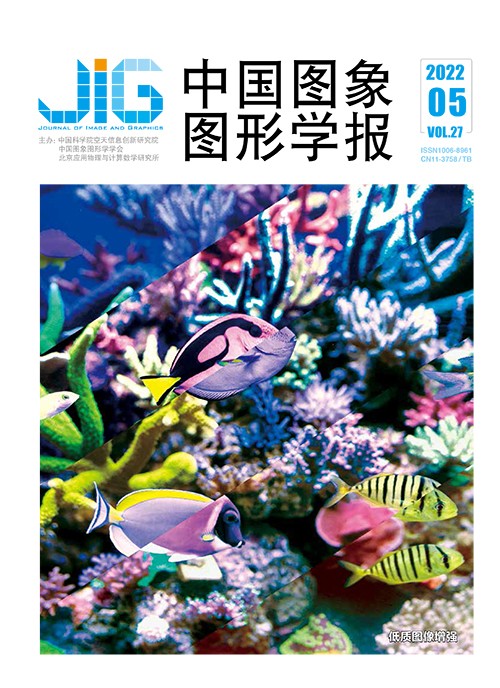
水下光学图像重建方法研究进展
摘 要
水下光学图像可以提供直观丰富的海洋信息,近年来在海洋资源开发、环境保护和海洋工程等诸多领域发挥越来越重要的作用。但是受恶劣复杂的水下成像环境影响,水下光学图像普遍存在对比度低、图像模糊以及颜色失真等质量退化问题,严重制约水下智能处理系统的性能和应用。如何清晰地重建水下光学图像是国内外广泛关注的、具有挑战性的难点问题。随着深度学习技术的蓬勃发展,利用深度学习来提升水下图像质量成为当前的研究热点。鉴于目前国内在水下光学图像重建方面的研究综述较少,本文全面综述其研究进展。分析了水下图像退化机理,总结了现有水下成像模型以及水下图像重建的挑战;梳理了水下光学图像重建方法的发展历程,根据是否采用深度学习以及是否基于成像模型,将现有方法分为4大类,并按照研究发展顺序,依次介绍4类方法的基本思想,分析其优缺点;归纳了目前公开的水下图像数据集以及常用的水下图像质量评价方法,并对8种典型的水下图像重建方法进行了性能评测和对比分析;总结了该领域目前仍存在的问题,展望了后续研究方向,以便于相关研究人员了解该领域的研究现状,促进该领域的技术发展。
关键词
An optical reconstruction based underwater image analysis
Wang Keyan, Huang Shirui, Li Yunsong(State Key Laboratory of Integrated Services Networks, Xidian University, Xi'an 710071, China) Abstract
Underwater optical images have played a key role in related to marine resource development, marine environment protection and marine engineering. Due to the harsh and complex underwater environment, the raw underwater optical images are challenged to the quality degradation, which are mainly introduced via an underwater scenario of light selective absorption and scattering. The degraded underwater images have low contrast, blurred details and color distortion, which severely restrict its performance and applications of underwater intelligent processing systems. In particular, the current deep learning based underwater image recovering has been facilitated currently. Our review first analyzes the mechanism of underwater image degradation, as well as describes the existing underwater imaging models and summarizes the challenges of underwater image reconstruction. Then, we trace the evolving of underwater optical image reconstruction methods. In accordance with the deep learning technology and the physical imaging models contextual, the existing algorithms are segmented into four categories for underwater images recovering methods, which are traditional image enhancement, traditional image restoration, deep-learning-based image enhancement and deep-learning-based image restoration. These four types of existing timescale methods are then discussed and analyzed, including their theories, features, pros and cons, respectively. Specifically, the traditional image enhancement methods tend to deliver unnatural results with color deviations and under-enhancement or over-enhancement of local area to improve the visibility of the underwater images effectively. Conversely, the traditional image restoration methods are based on the mechanism of underwater image degradation and a challenging issue is constrained of the limitations of imaging models and priori knowledge in diverse underwater scenarios. The deep learning based restoration methods is facilitated to nonlinear fitting capabilities of neural networks with an error stacking barrier and insufficient restoration results. The deep-learning-based enhancement methods are comparatively robust and suitable to recover diverse underwater images with flexible neural networks. However, they are relatively difficult to converge, and their generalization capability is insufficient. We introduce the current public underwater image datasets, which can be divided into two categories, and summarize their features and applications, respectively. Moreover, we also demonstrate more evaluation metrics for the quality of underwater images. To evaluate their performance quantitatively and qualitatively, we conduct experiments on eight typical underwater image reconstruction methods further. Three benchmarks are optioned for color cast removal, contrast improvement and comprehensive test. Our demonstrated results indicate that none of these methods are robust enough to recover diverse types of underwater images. The reconstruction of better underwater optical images is a big challenge issue of improving the robustness and generalization of reconstruction, developing more lightweight networks or processing algorithms of real-time applications, utilizing underwater image reconstruction to harness vision tasks ability, as well as establishing an underwater images quality assessment system.
Keywords
underwater degraded image deep learning image enhancement image restoration underwater benchmark underwater image quality assessment
|



 中国图象图形学报 │ 京ICP备05080539号-4 │ 本系统由
中国图象图形学报 │ 京ICP备05080539号-4 │ 本系统由